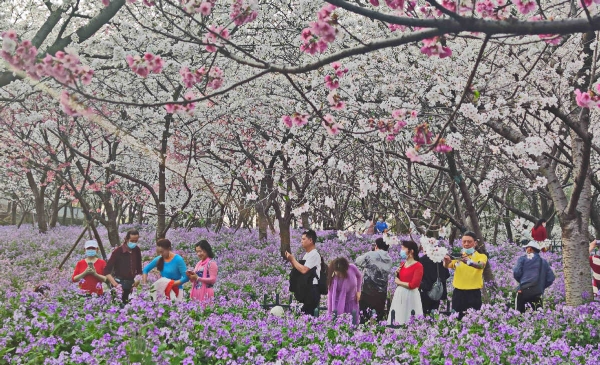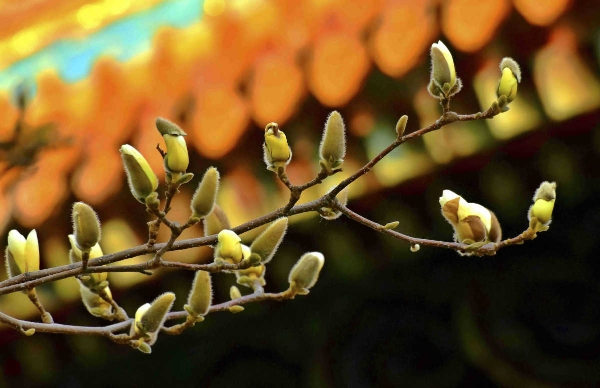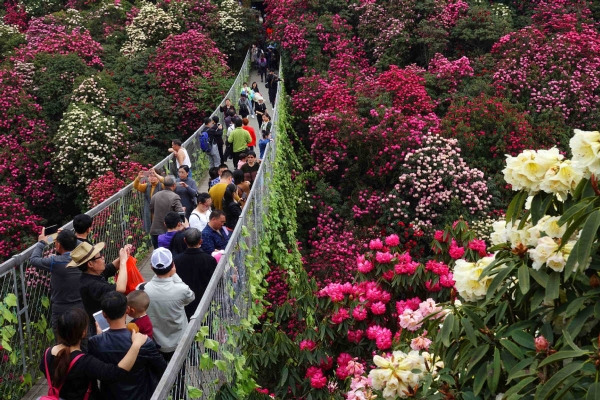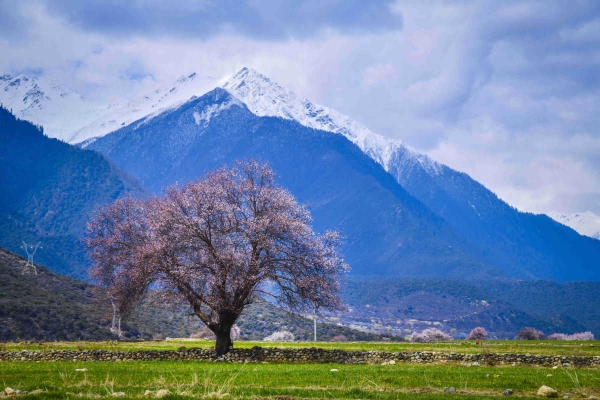Sights to behold
Source: China Daily | 2022-04-06 | Editor:Irene

Li Canglin/For China Daily
Cherry and plum blossom
Wuhan, Hubei province
This year, the cherry blossom garden along East Lake will provide boats to transport tourists to the scenic spot. This will not only enable them to relax along the journey but will also relieve traffic around the garden. Along with the cherry blossom garden, tourists can also visit the lake's plum blossom garden with one ticket.
The temperature-sensitive cherry blossom period will run through early this month because of the cooler weather last month, the park said.
Also this year, the cherry blossom garden will feature nighttime artistic performances, 3D projection displays on a pagoda and other light shows on flower paths, garden officials said. The shows will be canceled if bad weather occurs.

Zhou Zhongwei/For China Daily
Rapeseed
Wuyuan, Jiangxi province
Wuyuan rapeseed flowers grow on both plains and terraced fields. Located at different heights, flowers on plains blossom earlier than those at higher altitudes. The best viewing time for rapeseed flowers in the region is usually from mid-March to early April.
Tourist can visit villages featuring Hui-styled dwellings with black tile roofs and white walls dotted with golden rapeseed flowers. They can also try their hand at wood carvings, pyrography, palm weaving and other traditional skills taught by craftsmen.
Visitors can also enjoy local intangible cultural heritage activities, including dramas, Nuo dancing, wedding customs and tea ceremonies.

Song Xiaofen/For China Daily
Magnolia
Beijing
In late March and early April, magnolia flowers blossom in Beijing's royal gardens and ancient temples. There is a magnolia tree in the Dajue Temple in West Beijing that is about 300 years old. It would be a perfect place to view magnolia flowers during the Qingming Festival, which falls on April 5. Centuries-old magnolia trees can also be seen at the Tanzhe Temple, the Beijing Botanical Garden and the Palace Museum.
In addition, the Beijing International Sculpture Park that integrates nature and art has about 5,000 magnolia flowers that will bloom this spring. The park is one of the largest magnolia sightseeing places in the capital.

Qin Gang/For China Daily
Azalea
Bijie, Guizhou province
On March 15, the blossom season began at the Baili azalea scenic area, which spans 125.8 square kilometers in Bijie, Guizhou province. The season usually lasts until mid-April and can run as late as May.
One ticket enables a tourist to visit the area for three days, as the mountainous scenic spot has more than 60 species of azalea to view.
The Bijie government has planned cultural and sports tourism activities, including a sacrificial offering ceremony to a flower goddess, a movie festival, a traditional Chinese costume gala, parties, outdoor training courses and competitions.
Moreover, boats will take tourists to explore the unique geography of the Karst water cave in the area, and people can enjoy hot springs at local hotels.

Cao Jubo/For China Daily
Peach blossom
Nyingchi, Tibet autonomous region
A great time to visit Nyingchi for the peach blossoms would usually be from March 20 to April 15 each year.
It is more convenient to get a car to drive around the area to view the wild peach forests full of pink petals.
The peach blossom valley in Bomi county, Nyingchi, stretches for 30 kilometers, making it one of the longest in China. Peach blossoms can be seen everywhere-around houses, across farmland and along streams.
Peach trees bloom depending on the altitude and climate, so visitors will have the chance to enjoy the blossoms throughout April.
Mountain peach blossoms mainly grow at an altitude of 2,500 to 4,200 meters in Tibet and are widely distributed in the river valleys of Shigatse, Lhokha and Chamdo. They usually blossom at temperatures between 6 and 14 C.
You May Like
-
Snow view of Saihanba National Forest Park in north China's ...
Spring has arrived, but it is still snowing in many regions, and Saihanba National Forest Park is one of them.
InKunming 2022-03-02 -
'Overturned palette' of Lvchun Rice Terraces
What an amazing scenery as if the terraces were colour palettes overturned by God.
InKunming 2022-03-01 -
Greater choice gives tourism sector a boost
China's domestic tourism market continued to rebound during the holiday, with people seeking higher-quality tourism and leisure activities and more consumers in...
InKunming 2022-03-01 -
Snow scenery across China
Although spring has arrived, the temperature in many places is still very low, and there has been a large-scale snowfall in some provinces and cities.
InKunming 2022-02-22 -
Swiss banking on China's Winter Olympics legacy
Switzerland Tourism, the national marketing and sales organization for the Alpine country, expects to reap long-term benefits from the Beijing 2022 Olympic Wint...
InKunming 2022-02-22 -
Mainstream domestic films regale movie-goers during Spring F...
Mainstream domestic films, which had attracted wide attention over the past year, continued to gain momentum during this year's Spring Festival holiday that end...
InKunming 2022-02-10 -
Ice and snow travel heats up during Spring Festival holiday ...
As China basks in the fervor of Winter Olympics, "ice and snow travel" remained the most popular during the seven-day Spring Festival holiday this year.
InKunming 2022-02-10 -
Foreign experts experience Chinese traditional arts
Following the teacher's instruction, Anne Banitowski, with scissors in hand, was totally absorbed in cutting a red piece of paper along the dotted lines.
InKunming 2022-02-07 -
Cultural tourism favored among China's Spring Festival celeb...
"The performances in our new theater are often sold out, and even tickets for standing-room have to be added, which was unimaginable in the past," said Hong Shi...
InKunming 2022-02-07 -
Colorful Yunnan in warm winter
Yunnan in winter is not all covered with white snow, but has kinds of colorful scenery, which well decorates this winter.
InKunming 2022-01-13







